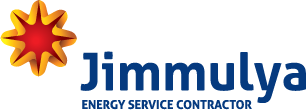The offshore oil and gas industry has witnessed remarkable advancements over the decades, with the evolution of jack-up rigs playing a crucial role. Jack-up rigs, primarily used for drilling in shallow waters, have evolved significantly in terms of design, capacity, and efficiency. This article explores the history of jack-up rigs, highlighting key milestones and their impact on the industry. We’ll also examine current trends, future directions, and provide a comparative analysis with other types of offshore rigs.
Historical Evolution of Jack-Up Rigs
Jack-up rigs have seen tremendous development since their inception in the mid-20th century. Below is a table outlining key milestones in their evolution, along with their corresponding capacities in barrels of oil produced per day.

Significant Milestones in Jack-Up Rig Evolution
- 1954: Introduction of the First Jack-Up Rig – The initial design allowed for drilling in shallow waters, marking the beginning of offshore drilling.
- 1970: Increased Drilling Capacity – Advancements in materials and engineering enabled deeper and more efficient drilling.
- 1980: Structural Enhancements – Improvements in structural integrity increased stability and safety.
- 1990: Advanced Drilling Technologies – Adoption of cutting-edge technologies significantly boosted productivity.
- 2010: Increased Automation – Automation reduced manual labor, enhancing safety and operational efficiency.
- 2020: AI and IoT Integration – Artificial intelligence and IoT optimized operations, leading to cost savings and efficiency gains.
The Future of Jack-Up Rigs
Looking ahead, the future of jack-up rigs is promising, with advancements expected in several areas:
- Enhanced Efficiency – Ongoing research aims to improve the efficiency of jack-up rigs, reducing operational costs.
- Environmental Sustainability – Future rigs will likely incorporate environmentally friendly technologies to minimize their ecological footprint.
- Advanced Safety Features – New safety protocols and technologies will continue to enhance offshore drilling safety.
- Increased Automation and AI – Further integration of AI and machine learning will optimize drilling operations, making them more efficient and cost-effective.
Significant Projects Involving Jack-Up Rigs
One of the largest projects involving jack-up rigs is the Johan Sverdrup field in the North Sea, operated by Equinor. This project, with a production capacity of over 600,000 barrels of oil per day, showcases the capabilities and significance of modern jack-up rigs in the offshore oil and gas industry.
Comparative Analysis: Jack-Up Rigs vs. Other Offshore Rigs
To understand the unique position of jack-up rigs, it’s essential to compare them with other types of offshore rigs. Below is a table summarizing key differences:

Conclusion
The evolution of jack-up rigs has been a cornerstone of the offshore oil and gas industry, driving significant advancements in drilling capabilities, safety, and efficiency. As technology continues to evolve, jack-up rigs will play an even more critical role in meeting the world’s energy needs.
Sources
1. [Offshore Technology](https://www.offshore-technology.com)
2. [World Oil](https://www.worldoil.com)
3. [Equinor](https://www.equinor.com)
4. [Oil & Gas Journal](https://www.ogj.com)
#OilAndGas #OffshoreDrilling #JackUpRigs #EnergyIndustry #Technology #Innovation #Sustainability #AI #Automation #Equinor #Engineering #Energy #IndustryTrends #FutureOfEnergy #Efficiency #Safety #EnvironmentalSustainability #EnergyProduction #DrillingTechnology #OffshoreEngineering

